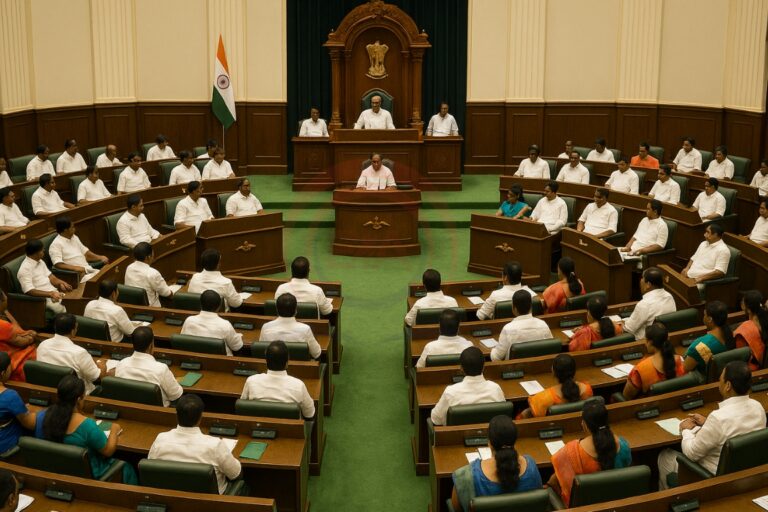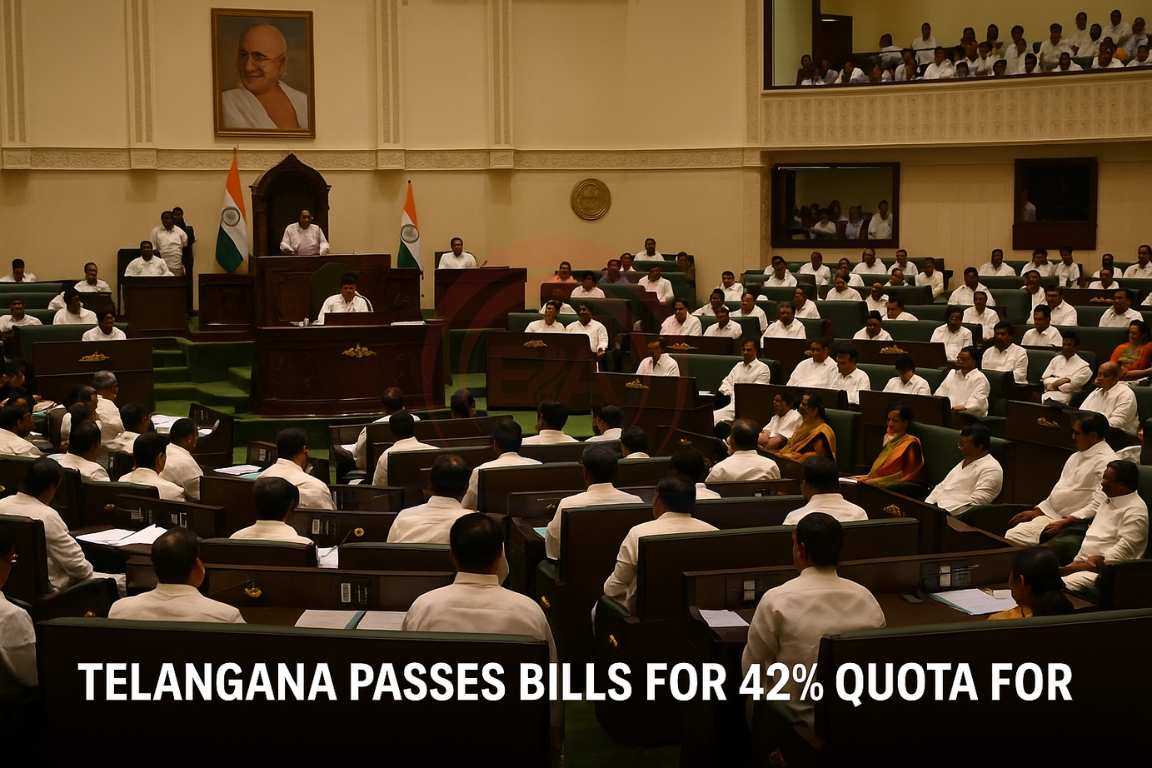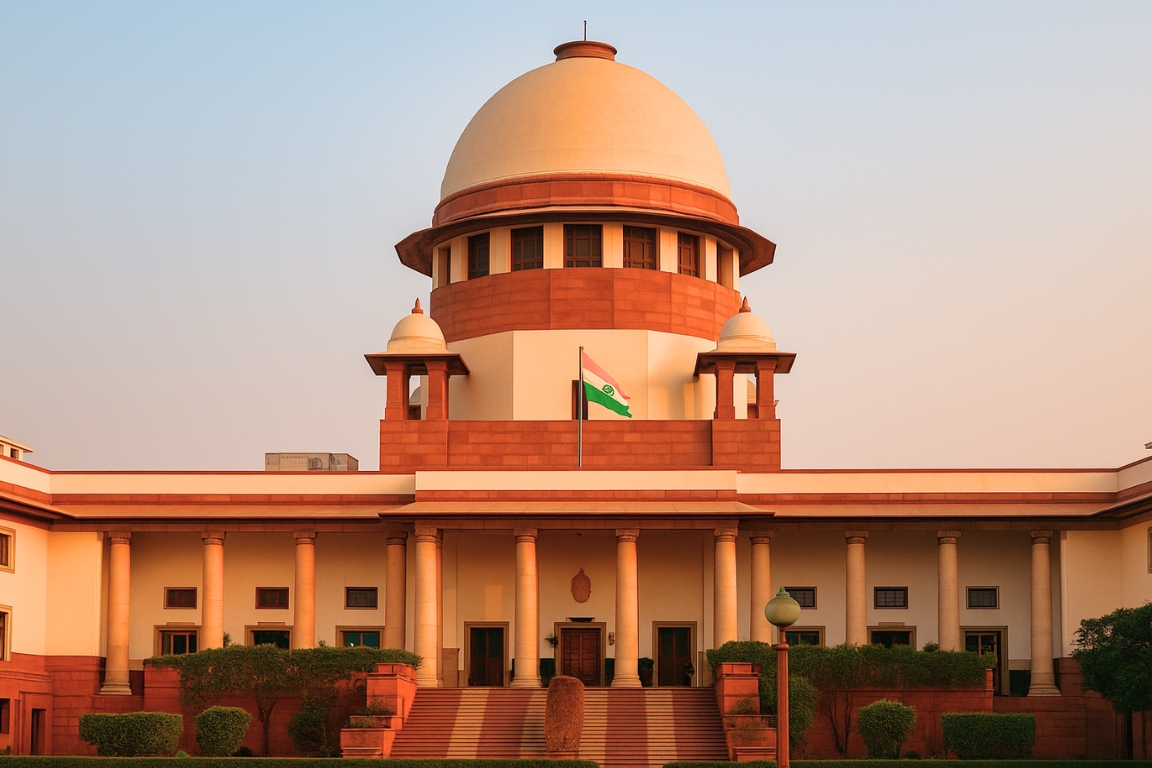The Telangana Assembly passed two amendment Bills to implement 42% reservation for Backward Classes (BCs) in local body elections. This comes while earlier Bills and an Ordinance on the same issue are still pending with the President of India for assent.
Key Highlights of the Bills
- Bills Passed:
- Telangana Municipalities (Third Amendment) Bill, 2025.
- Telangana Panchayat Raj (Third Amendment) Bill, 2025.
- Objective: To ensure proportional representation for BCs in local self-government institutions.
- Basis: Reservation was decided after a socio-economic and caste survey covering all households.
- Commission Setup: A dedicated panel studied BCs’ socio-economic, educational, and political conditions before recommending reservation proportion.

Importance of the Bills
- Political Representation: Gives BC communities a stronger voice in decision-making at the grassroots.
- Social Justice: Aligns with the principle of uplifting historically disadvantaged groups.
- Scientific Backing: Unlike earlier attempts in other states, Telangana’s move is backed by survey data and commission findings.
Impact of the Bills
- Positive Impact:
- Empowers BC communities politically and socially.
- Could improve representation in local governance and bring inclusive policies.
- Concerns Raised:
- Legal Hurdles: Total reservation (SC + ST + BC) may cross the 50% cap set by the Supreme Court in Indra Sawhney case (1992).
- Pending Approval: Requires assent of the President, since similar moves earlier faced hurdles in Bihar and Madhya Pradesh.
RESERVATION IN INDIA
- SCs and STs: Reservation based on population proportion.
- OBCs/BCs: Reservation provided but subject to the overall 50% ceiling.
- Current Levels:
- SCs: 15% (Central).
- STs: 7.5% (Central).
- OBCs: 27% (Central, after Mandal Commission).
Some states (Tamil Nadu, Haryana, etc.) provide higher quotas under State laws
Basis of Reservation in India
- Social and Educational Backwardness (not just economic).
- Historical Disadvantage: Communities deprived of access to education, employment, and governance.
- Scientific Data: Often determined by caste surveys, commissions, and socio-economic studies.
Constitutional Provisions on Reservation
- Article 15(4) & 15(5): Special provisions for advancement of socially and educationally backward classes.
- Article 16(4): Reservation in public employment.
- Article 243D & 243T: Reservation in Panchayats and Municipalities.
- Article 340: Appointment of Commissions to investigate backwardness (e.g., Mandal Commission).
- 103rd Amendment (2019): Introduced 10% quota for Economically Weaker Sections (EWS).
Conclusion:
The Telangana government’s move to provide 42% BC reservation in local bodies reflects an attempt to balance social justice with constitutional limits. While it empowers BCs politically, its implementation will depend on legal scrutiny and Presidential approval.





